Asuntos Tradicionalistas
 |
 |
 |
 |
 |
 |
 |
Misa Dialogada - CLV
Las tres últimas herejías antilitúrgicas
10. El ataque al Papado
Dom Prosper Guéranger no tenía ninguna ilusión sobre la actitud protestante hacia el Papado: no se trataba simplemente de objetar la corrupción de ciertos prelados o los abusos eclesiásticos en el siglo XVI, sino de la aniquilación del cargo del Papado y de la autoridad espiritual del Papa. Proporcionó evidencia de que hasta el siglo XIX los servicios litúrgicos luteranos utilizaban himnos con versos escandalosos que vilipendiaban a los Pontífices Romanos como enemigos del cristianismo, dando así un sello oficial de aprobación para su denuncia en un contexto litúrgico.
 Dom Guéranger dio como ejemplo un verso de un himnario alemán del siglo XVI, todavía en uso en su tiempo, que colocaba al Papa al mismo nivel que los turcos anti-cristianos del Imperio Otomano:
Dom Guéranger dio como ejemplo un verso de un himnario alemán del siglo XVI, todavía en uso en su tiempo, que colocaba al Papa al mismo nivel que los turcos anti-cristianos del Imperio Otomano:
“De la ira asesina, calumnia, furia violenta y ferocidad salvaje del Turco y del Papa, líbranos, oh Señor.”1
Este himnario, titulado Geystliche Lieder (Canciones Espirituales), fue publicado por Valentin Bapst en 1559 con un Prólogo de Martín Lutero, y se convirtió en un elemento básico de la himnología luterana por muchas generaciones. Su influencia continuó a lo largo de los siglos mediante múltiples reimpresiones y nuevos materiales. Una característica destacada del prólogo es su postura virulentamente antipapal y su tono malévolo, según se observa en la maldición blasfema insertada por Lutero:
“En la medida en que esta edición de Valentin Bapst está preparada con buen estilo, Dios conceda que pueda causar mayor daño y perjuicio a ese Papa romano.” 2
No se pudo infligir mayor daño o perjuicio al Papado que el realizado por los Papas del Vaticano II. Fue la doctrina de la colegialidad del Concilio la que resultó en una reconfiguración completa del Oficio Petrino, en detrimento del principio de Unidad, la primera de las características definitorias de la Iglesia.
11. La destrucción del sacerdocio
Dom Guéranger mostró cómo los protestantes, al rechazar el Oficio Petrino, necesariamente rechazaron el sacerdocio católico:
“La herejía antilitúrgica necesitaba, para establecer su reinado para siempre, la destrucción en la práctica y en el principio de todo sacerdocio en el cristianismo. Porque sentía que donde hay un Pontífice, hay un altar, y donde hay un altar hay un sacrificio y, por lo tanto, la realización de un ceremonial misterioso.” 3
 En cambio, los protestantes adoptaron el principio de Lutero del “sacerdocio de todos los bautizados”, que no reconocía diferencia esencial entre sacerdotes ordenados y laicos, ni poderes espirituales únicos de los ordenados, ni un estatus superior de los sacerdotes sobre el pueblo.
En cambio, los protestantes adoptaron el principio de Lutero del “sacerdocio de todos los bautizados”, que no reconocía diferencia esencial entre sacerdotes ordenados y laicos, ni poderes espirituales únicos de los ordenados, ni un estatus superior de los sacerdotes sobre el pueblo.
Bajo la influencia de la Nueva Teología adoptada por el Vaticano II, la rueda ha dado la vuelta y la “herejía antilitúrgica” del luteranismo ha tomado residencia en el seno de la Iglesia Católica. Los innovadores teológicos han logrado, con impunidad y a veces con aprobación oficial, reducir a los miembros ordenados de la Iglesia al mismo nivel que todos los cristianos. Cualquiera que sostenga el concepto tradicional del sacerdocio sacramental es declarado culpable de “Clericalismo.” 4
12. La autoridad papal reemplazada por instituciones seculares
Aquí Dom Guéranger explicó el resultado de la duodécima y última de su lista de “herejías antilitúrgicas.” Una vez que el Papado ha sido degradado y devaluado en la práctica, y el poder espiritual del Papa relegado al olvido, se habrá alcanzado el objetivo final de la “herejía antilitúrgica.” Porque la pérdida del control espiritual por parte del Papado conduce inexorablemente al aumento del control secular en los asuntos eclesiásticos, ya sea en la liturgia, instituciones educativas, seminarios, tribunales matrimoniales, etc.
 Esto es exactamente lo que los protestantes – y sus homólogos neomodernistas en el Vaticano II ‒ pretendían lograr mediante la Libertad Religiosa. No es sorprendente que, tras el Vaticano II, cada aspecto de la vida católica considerado anteriormente sagrado e inviolable haya experimentado un proceso de secularización en el sentido de impregnarlo y contaminarlo con los valores del mundo. Incluso antes de que concluyera el Concilio, Pablo VI confió a los fieles católicos a la tierna misericordia de las Naciones Unidas – que se opone a los derechos de Dios en la sociedad – como un gobierno global que, él imaginaba, impondría leyes y valores para garantizar la paz mundial en lugar del conflicto.
Esto es exactamente lo que los protestantes – y sus homólogos neomodernistas en el Vaticano II ‒ pretendían lograr mediante la Libertad Religiosa. No es sorprendente que, tras el Vaticano II, cada aspecto de la vida católica considerado anteriormente sagrado e inviolable haya experimentado un proceso de secularización en el sentido de impregnarlo y contaminarlo con los valores del mundo. Incluso antes de que concluyera el Concilio, Pablo VI confió a los fieles católicos a la tierna misericordia de las Naciones Unidas – que se opone a los derechos de Dios en la sociedad – como un gobierno global que, él imaginaba, impondría leyes y valores para garantizar la paz mundial en lugar del conflicto.
Vaticano II y el regreso al neogalicanismo
Para ver las implicaciones más amplias del trabajo de Dom Guéranger y cómo esto se aplica a las reformas del Vaticano II, es necesario situar su “herejía antilitúrgica” en su contexto histórico.
El término “neo-Gallican” 5 designa los libros litúrgicos usados en la mayoría de las diócesis francesas desde el siglo XVII hasta el XIX, que reemplazaron los ritos tridentinos emitidos bajo la autoridad del Papa San Pío V. Aunque estos Breviarios y Misales “neo-galicanos” conservaron algunas características del rito romano, Dom Guéranger los criticó severamente tanto por sus “honteuses et criminelles mutilations” (mutilaciones vergonzosas y criminales) como por sus innovaciones. 6
 El sucesor inmediato de Dom Guéranger como Abad de Solesmes, Dom Alphonse Guépin, resumió la situación en palabras que resuenan en nuestra época:
El sucesor inmediato de Dom Guéranger como Abad de Solesmes, Dom Alphonse Guépin, resumió la situación en palabras que resuenan en nuestra época:
“La situación descendió en completa anarquía mientras los libros litúrgicos se actualizaban constantemente para adaptarse a las condiciones locales y a la sensibilidad cambiante de la gente, con el resultado de que el clero perdió su sentido de Tradición y los fieles su apego a los ritos romanos tradicionales que ya no comprendían. La ausencia de rúbricas fijas impuestas por las autoridades competentes dio lugar a profanaciones frecuentes. Se descuidó el deber de realizar la oración pública de la Iglesia; y la Fe misma sufrió por estos desórdenes que quedaron sin corregirse.”7
Sería difícil encontrar una profecía más precisa del caos producido por las reformas del Vaticano II que alentaron la diversidad litúrgica, la creatividad y las infinitas opciones en la realización de los ritos, la participación activa de los laicos, la adaptación de la liturgia a las costumbres locales y la actualización constante para ajustarse al espíritu de los tiempos.
Si estas fueron las condiciones que prevalecieron en Francia, contra las cuales Dom Prosper Guéranger lanzó una campaña implacable para su abolición, no tiene sentido afirmar que él fue el “abuelo” del Movimiento Litúrgico cuyos miembros influyeron colectivamente en la Constitución sobre la Liturgia del Vaticano II y sus reformas litúrgicas posteriores en líneas casi idénticas.
Continuará

Dom Prosper Guéranger no tenía ninguna ilusión sobre la actitud protestante hacia el Papado: no se trataba simplemente de objetar la corrupción de ciertos prelados o los abusos eclesiásticos en el siglo XVI, sino de la aniquilación del cargo del Papado y de la autoridad espiritual del Papa. Proporcionó evidencia de que hasta el siglo XIX los servicios litúrgicos luteranos utilizaban himnos con versos escandalosos que vilipendiaban a los Pontífices Romanos como enemigos del cristianismo, dando así un sello oficial de aprobación para su denuncia en un contexto litúrgico.

Tanto los progresistas como los protestantes están orientados hacia la destrucción del Papado
“De la ira asesina, calumnia, furia violenta y ferocidad salvaje del Turco y del Papa, líbranos, oh Señor.”1
Este himnario, titulado Geystliche Lieder (Canciones Espirituales), fue publicado por Valentin Bapst en 1559 con un Prólogo de Martín Lutero, y se convirtió en un elemento básico de la himnología luterana por muchas generaciones. Su influencia continuó a lo largo de los siglos mediante múltiples reimpresiones y nuevos materiales. Una característica destacada del prólogo es su postura virulentamente antipapal y su tono malévolo, según se observa en la maldición blasfema insertada por Lutero:
“En la medida en que esta edición de Valentin Bapst está preparada con buen estilo, Dios conceda que pueda causar mayor daño y perjuicio a ese Papa romano.” 2
No se pudo infligir mayor daño o perjuicio al Papado que el realizado por los Papas del Vaticano II. Fue la doctrina de la colegialidad del Concilio la que resultó en una reconfiguración completa del Oficio Petrino, en detrimento del principio de Unidad, la primera de las características definitorias de la Iglesia.
11. La destrucción del sacerdocio
Dom Guéranger mostró cómo los protestantes, al rechazar el Oficio Petrino, necesariamente rechazaron el sacerdocio católico:
“La herejía antilitúrgica necesitaba, para establecer su reinado para siempre, la destrucción en la práctica y en el principio de todo sacerdocio en el cristianismo. Porque sentía que donde hay un Pontífice, hay un altar, y donde hay un altar hay un sacrificio y, por lo tanto, la realización de un ceremonial misterioso.” 3

El clero alto y bajo es rechazado por la tesis del sacerdocio de todos los bautizados
Bajo la influencia de la Nueva Teología adoptada por el Vaticano II, la rueda ha dado la vuelta y la “herejía antilitúrgica” del luteranismo ha tomado residencia en el seno de la Iglesia Católica. Los innovadores teológicos han logrado, con impunidad y a veces con aprobación oficial, reducir a los miembros ordenados de la Iglesia al mismo nivel que todos los cristianos. Cualquiera que sostenga el concepto tradicional del sacerdocio sacramental es declarado culpable de “Clericalismo.” 4
12. La autoridad papal reemplazada por instituciones seculares
Aquí Dom Guéranger explicó el resultado de la duodécima y última de su lista de “herejías antilitúrgicas.” Una vez que el Papado ha sido degradado y devaluado en la práctica, y el poder espiritual del Papa relegado al olvido, se habrá alcanzado el objetivo final de la “herejía antilitúrgica.” Porque la pérdida del control espiritual por parte del Papado conduce inexorablemente al aumento del control secular en los asuntos eclesiásticos, ya sea en la liturgia, instituciones educativas, seminarios, tribunales matrimoniales, etc.

Pablo VI en las Naciones Unidas en 1965
Vaticano II y el regreso al neogalicanismo
Para ver las implicaciones más amplias del trabajo de Dom Guéranger y cómo esto se aplica a las reformas del Vaticano II, es necesario situar su “herejía antilitúrgica” en su contexto histórico.
El término “neo-Gallican” 5 designa los libros litúrgicos usados en la mayoría de las diócesis francesas desde el siglo XVII hasta el XIX, que reemplazaron los ritos tridentinos emitidos bajo la autoridad del Papa San Pío V. Aunque estos Breviarios y Misales “neo-galicanos” conservaron algunas características del rito romano, Dom Guéranger los criticó severamente tanto por sus “honteuses et criminelles mutilations” (mutilaciones vergonzosas y criminales) como por sus innovaciones. 6

Dom Alphonse Guépin, sucesor de Dom Guéranger como Abad de Solesmes
“La situación descendió en completa anarquía mientras los libros litúrgicos se actualizaban constantemente para adaptarse a las condiciones locales y a la sensibilidad cambiante de la gente, con el resultado de que el clero perdió su sentido de Tradición y los fieles su apego a los ritos romanos tradicionales que ya no comprendían. La ausencia de rúbricas fijas impuestas por las autoridades competentes dio lugar a profanaciones frecuentes. Se descuidó el deber de realizar la oración pública de la Iglesia; y la Fe misma sufrió por estos desórdenes que quedaron sin corregirse.”7
Sería difícil encontrar una profecía más precisa del caos producido por las reformas del Vaticano II que alentaron la diversidad litúrgica, la creatividad y las infinitas opciones en la realización de los ritos, la participación activa de los laicos, la adaptación de la liturgia a las costumbres locales y la actualización constante para ajustarse al espíritu de los tiempos.
Si estas fueron las condiciones que prevalecieron en Francia, contra las cuales Dom Prosper Guéranger lanzó una campaña implacable para su abolición, no tiene sentido afirmar que él fue el “abuelo” del Movimiento Litúrgico cuyos miembros influyeron colectivamente en la Constitución sobre la Liturgia del Vaticano II y sus reformas litúrgicas posteriores en líneas casi idénticas.
Continuará
- Prosper Guéranger, Institutions Liturgiques, vol I, p. 404. Dom Guéranger lo referenció simplemente como Lutherische Gesangbuch (Himnario Luterano), Leipzig, p. 667, pero la referencia correcta es Valentin Bapst, Geystliche Lieder, Leipzig, 1559, p. 667.
- “Gottgebe das damit dem Romische Bapst…grosser abbruch und schaden geschehe. Amen,” Valentin Bapst, op. cit., p. v. Notamos que en el Prólogo Lutero utilizó un juego de palabras con la rima entre Bapst y Papst (la palabra alemana para Papa).
- P.r Guéranger, Institutions Liturgiques, vol.I, p. 405.
- Un relato detallado y minucioso de la falsa acusación de “Clericalismo” se proporciona en esta serie, especialmente en los artículos 118 a 122
- Se llaman “neo-Galicanos” para distinguirlos del antiguo rito galicano que se desarrolló en la Galia a comienzos del siglo VI y permaneció en uso en la mayor parte de lo que ahora se llama Francia, hasta fusionarse con el rito romano bajo Carlomagno.
- P. Guéranger, Institutions Liturgiques, vol. 2, p. 100.
Publicado el 11 de noviembre de 2025

______________________
______________________
 Volume I |
 Volume II |
 Volume III |
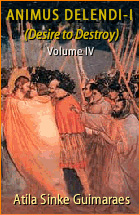 Volume IV |
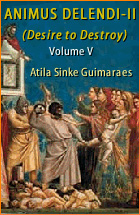 Volume V |
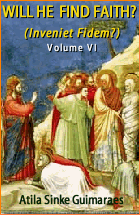 Volume VI |
 Volume VII |
 Volume VIII |
 Volume IX |
 Volume X |
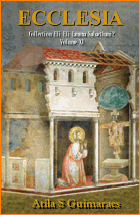 Volume XI |
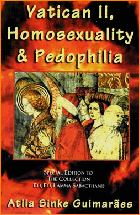 Special Edition |






